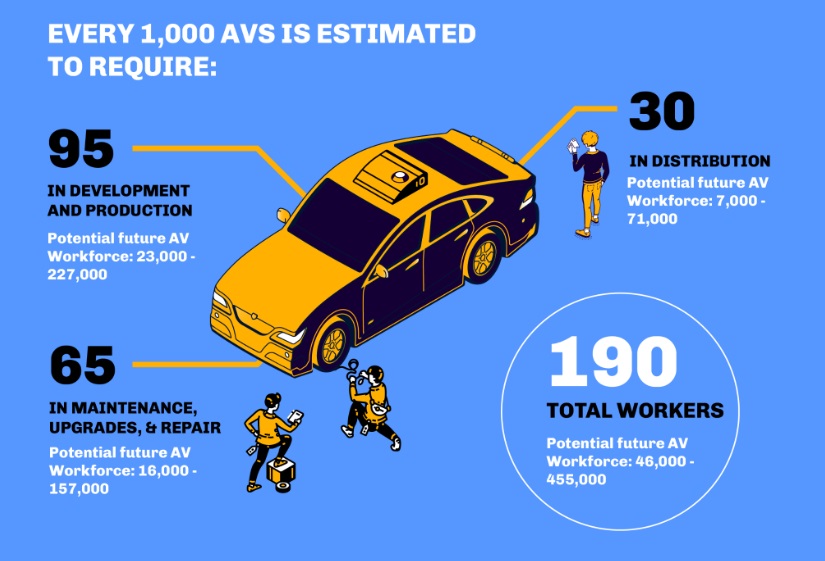ITSdigest
More than 114,000 workers — and possibly up to 455,000 workers – will be employed over the next 15 years to meet AV production, distribution, maintenance, upgrades, and repair needs, according to a new report from the Chamber of Progress.
For every 1,000 AVs produced and deployed annually, approximately 190 workers will be needed
"The deployment of autonomous vehicles will mean hundreds of thousands of jobs created here in the US," said Chamber of Progress CEO Adam Kovacevich. "What this research shows is that with smart public policy, AVs are likely to bring good-paying jobs for a whole range of workers with different educational backgrounds. Ultimately, this sector could be an economic engine for the US if we’re able to maintain a lead in designing and producing these cars."

Source: Chamber of Progress
Key findings of the report include:
■ For every 1,000 AVs produced and deployed annually, approximately 190 workers will be needed for manufacturing and servicing these vehicles.
■ In a moderate economic scenario, the report anticipates deployment of 9 million autonomous vehicles over the next 15 years, with 114,000 jobs created.
■ In an optimistic scenario, the report forecasts deployment of 36 million AVs deployed over the next 15 years with 455,000 jobs created.
■ AV industry jobs typically pay above US median wage. Analysis shows that 82% of AV workers make more than the US median wage.
■ AVs can support the resiliency of the US auto industry where it is strong today and create new centers for AV-related jobs in places with strong tech sectors.
■ To take advantage of AV economic and job opportunities, the US must encourage further technology development, increase capital investment, and establish a favorable regulatory framework.
The report also recommends the following:
■ Establish a supportive federal regulatory environment.
■ Develop international collaboration to set AV regulations.
■ Encourage state-sponsored skills development programs to prepare the workforce for the jobs of the future.
■ Ensure that Infrastructure Investment and Jobs Act funding expenditures support the embedding of digital infrastructure in the physical infrastructure.
■ Consider AVs when planning, developing, or investing in electric vehicle infrastructure.
■ Support ongoing AV innovation through federal investments in Tech Hubs, NSF Engines, and similar initiatives.
The report was developed by Steer, a consultancy that combines commercial, economic, technical, and planning expertise, and Fourth Economy, a national strategy firm focused on community and economic development.




